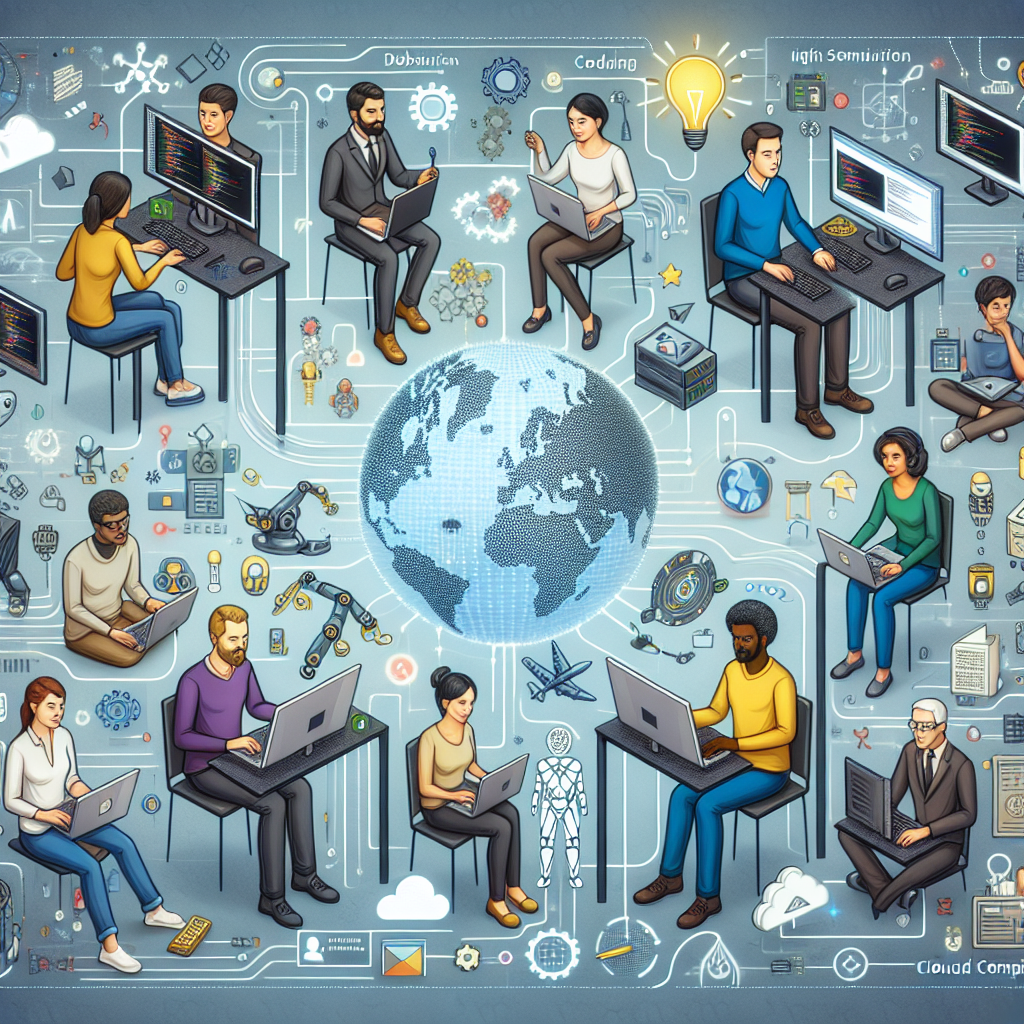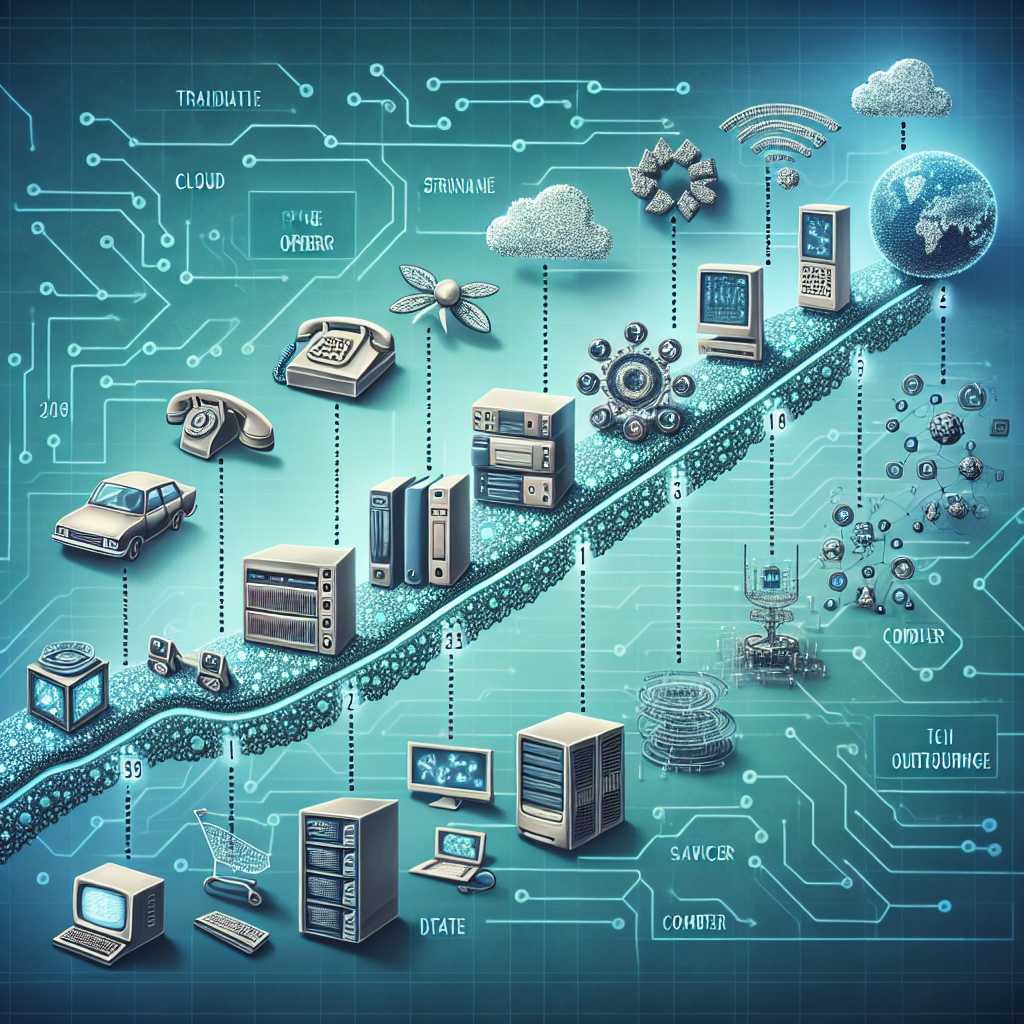Your cart is currently empty!
Tag: Trends

Cybersecurity Trends to Watch in the Coming Years
As technology continues to advance at a rapid pace, cybersecurity has become a critical concern for individuals, businesses, and governments alike. With cyber threats becoming more sophisticated and prevalent, staying ahead of the curve is essential in protecting sensitive information and preventing data breaches. Here are some cybersecurity trends to watch in the coming years:1. Artificial Intelligence and Machine Learning: AI and machine learning technologies are being increasingly used in cybersecurity to detect and respond to threats in real-time. These technologies can analyze vast amounts of data to identify patterns and anomalies, enabling organizations to better protect their networks and data.
2. Zero Trust Security: The traditional approach to cybersecurity, where trust is placed on users and devices inside the network, is no longer sufficient in today’s threat landscape. Zero Trust security assumes that no user or device should be trusted by default, and access to resources is granted on a need-to-know basis. This approach helps organizations mitigate the risk of insider threats and unauthorized access.
3. Cloud Security: As more businesses move their operations to the cloud, ensuring the security of cloud environments has become a top priority. Cloud security solutions are evolving to provide better visibility and control over cloud infrastructure, as well as to protect against data breaches and other cyber threats.
4. Internet of Things (IoT) Security: With the proliferation of IoT devices, such as smart home gadgets and industrial sensors, securing these devices has become a major challenge. IoT security solutions are being developed to address vulnerabilities in these devices and protect against attacks that could compromise sensitive data.
5. Quantum Cryptography: Quantum computing has the potential to break traditional encryption algorithms, posing a significant threat to cybersecurity. Quantum cryptography, which leverages the principles of quantum mechanics to secure communications, is being explored as a potential solution to protect sensitive information in the quantum computing era.
6. Cybersecurity Regulation: Governments around the world are enacting stricter cybersecurity regulations to hold organizations accountable for protecting their data and systems. Compliance with these regulations is becoming increasingly important, as failure to do so can result in hefty fines and reputational damage.
In conclusion, staying informed about the latest cybersecurity trends and technologies is essential for organizations to effectively protect their data and systems from cyber threats. By embracing innovative solutions and best practices, businesses can stay ahead of the curve and safeguard their digital assets in the coming years.

Trends and Innovations in the IT Outsourcing Industry
The IT outsourcing industry has seen significant growth and evolution in recent years, with new trends and innovations shaping the way businesses approach their technology needs. From cloud computing to artificial intelligence, companies are increasingly turning to outsourcing partners to help them stay competitive in the fast-paced digital landscape.One of the most prominent trends in the IT outsourcing industry is the rise of cloud computing services. As more businesses move their operations to the cloud, they are turning to outsourcing partners to help them manage and optimize their cloud infrastructure. This has led to a surge in demand for cloud experts who can help companies navigate the complexities of cloud migration and management.
Another key trend in the IT outsourcing industry is the increasing focus on cybersecurity. With cyber threats becoming more sophisticated and prevalent, businesses are looking for outsourcing partners who can help them protect their data and systems from potential breaches. This has led to a growing demand for cybersecurity experts who can offer services such as threat detection, incident response, and security audits.
Artificial intelligence (AI) is also playing a significant role in shaping the IT outsourcing industry. Businesses are increasingly turning to AI-powered solutions to automate repetitive tasks, improve decision-making processes, and enhance customer experiences. Outsourcing partners are leveraging AI technologies to offer services such as chatbots, predictive analytics, and machine learning, helping companies drive efficiency and innovation in their operations.
In addition to these trends, the IT outsourcing industry is also seeing innovations in areas such as blockchain, Internet of Things (IoT), and robotic process automation (RPA). These technologies are enabling businesses to streamline processes, improve productivity, and enhance customer engagement, leading to increased demand for outsourcing partners who can provide expertise in these areas.
Overall, the IT outsourcing industry is experiencing a period of rapid change and innovation, driven by the evolving needs of businesses in today’s digital economy. Companies that partner with outsourcing providers who can offer expertise in cloud computing, cybersecurity, AI, and other cutting-edge technologies will be well-positioned to thrive in the competitive marketplace. As the industry continues to evolve, businesses will need to stay ahead of the curve by embracing the latest trends and innovations in IT outsourcing.

The Evolution of Technical Support: Trends and Best Practices
Technical support has come a long way in the past few decades, evolving from simple phone calls to sophisticated remote troubleshooting and online chat support. As technology continues to advance at a rapid pace, so too does the need for more efficient and effective technical support services.One of the key trends in technical support is the shift towards self-service options. With the rise of online knowledge bases and troubleshooting guides, many customers are now able to resolve their own technical issues without having to contact a support representative. This not only saves time and resources for the company, but also empowers customers to take control of their own technical problems.
Another important trend in technical support is the growing use of remote support tools. With the ability to access a customer’s computer or device from a remote location, support technicians can quickly diagnose and fix issues without the need for an in-person visit. This not only speeds up the resolution process, but also reduces the cost and inconvenience of sending a technician on-site.
In addition to these trends, there are also a number of best practices that companies can follow to ensure they are providing the best possible technical support to their customers. One of the most important best practices is to prioritize customer satisfaction above all else. This means being responsive to customer inquiries, providing clear and concise instructions, and following up to ensure that the issue has been resolved to the customer’s satisfaction.
Another best practice is to invest in training and development for support technicians. With technology constantly evolving, it is essential that support staff are kept up to date on the latest trends and best practices in technical support. This will not only improve the quality of support provided, but also increase customer satisfaction and loyalty.
Overall, the evolution of technical support has led to more efficient and effective support services for customers. By following the latest trends and best practices in the industry, companies can ensure they are providing the best possible support to their customers and staying ahead of the competition.

The Future of Cloud Computing: Trends and Predictions for 2021 and Beyond
Cloud computing has become an integral part of the modern business landscape, enabling organizations to access and store data, run applications, and scale resources on-demand. As we enter a new year, it’s important to look ahead at the trends and predictions that will shape the future of cloud computing in 2021 and beyond.One of the key trends that will continue to drive the growth of cloud computing is the increasing adoption of hybrid and multi-cloud strategies. Organizations are realizing the benefits of using a combination of public and private cloud services to optimize performance, security, and cost efficiency. In 2021, we can expect to see more companies embracing hybrid and multi-cloud environments to meet their specific business needs.
Another trend that will shape the future of cloud computing is the rise of edge computing. Edge computing brings data processing closer to the source of data generation, reducing latency and improving performance for applications that require real-time processing. As more devices become connected to the internet, such as IoT devices and autonomous vehicles, edge computing will play a crucial role in enabling these devices to operate efficiently and securely.
Security will also be a top priority for cloud computing in 2021 and beyond. With the increasing number of cyber threats and data breaches, organizations are investing in advanced security measures to protect their data and applications in the cloud. Cloud providers will continue to enhance their security offerings, such as encryption, identity and access management, and threat detection, to ensure the safety of their customers’ data.
As technology continues to evolve, artificial intelligence (AI) and machine learning (ML) will play a significant role in shaping the future of cloud computing. AI and ML algorithms can analyze vast amounts of data to provide insights, automate tasks, and improve decision-making processes. In 2021, we can expect to see more cloud providers integrating AI and ML capabilities into their services to help organizations leverage the power of data analytics and predictive modeling.
In conclusion, the future of cloud computing looks promising, with trends such as hybrid and multi-cloud strategies, edge computing, security enhancements, and AI and ML integration driving innovation and growth in the industry. As organizations continue to embrace cloud technology to transform their business operations, it is important to stay informed and adapt to the latest trends and developments in order to stay competitive in the digital age.

Top Trends in Managed Services for 2021 and Beyond
Managed services have become increasingly popular in recent years, as businesses look for ways to streamline their operations and reduce costs. In 2021 and beyond, there are several key trends that are shaping the managed services industry and driving its growth.One of the top trends in managed services for 2021 is the increasing use of artificial intelligence and automation. As businesses look for ways to improve efficiency and reduce manual labor, AI and automation are becoming essential tools for managed service providers. These technologies can help automate routine tasks, improve decision-making processes, and enhance overall productivity.
Another major trend in managed services is the shift towards cloud-based solutions. More and more businesses are turning to the cloud for their IT infrastructure, as it offers greater flexibility, scalability, and cost-effectiveness. Managed service providers are increasingly offering cloud-based solutions to their clients, allowing them to access their data and applications from anywhere, at any time.
Cybersecurity is also a top priority for businesses in 2021, as cyber threats continue to evolve and become more sophisticated. Managed service providers are now offering comprehensive cybersecurity solutions to help businesses protect their data and systems from cyber attacks. This includes services such as threat monitoring, incident response, and security assessments.
In addition, managed service providers are increasingly offering specialized services tailored to specific industries. For example, healthcare providers may require managed services that comply with HIPAA regulations, while financial institutions may need services that comply with PCI DSS standards. By offering industry-specific solutions, managed service providers can better meet the unique needs of their clients.
Lastly, the COVID-19 pandemic has accelerated the adoption of managed services, as businesses look for ways to adapt to remote work and digital transformation. Managed service providers are now offering a range of services to help businesses navigate these changes, including remote IT support, cloud migration, and collaboration tools.
Overall, the managed services industry is evolving rapidly in 2021 and beyond, with trends such as AI and automation, cloud-based solutions, cybersecurity, industry-specific services, and the impact of the COVID-19 pandemic driving its growth. Businesses that embrace these trends and work with experienced managed service providers will be well-positioned to succeed in the increasingly digital and competitive business landscape.

The Top Trends in Managed Service Provider Technology
Managed Service Providers (MSPs) are constantly evolving to meet the needs of their clients and stay ahead of the curve in the ever-changing technology landscape. As technology continues to advance at a rapid pace, MSPs are adapting and embracing new trends to provide better, more efficient services to their customers. In this article, we will explore some of the top trends in managed service provider technology that are shaping the industry today.1. Cloud Services
Cloud computing has become a mainstream technology solution for many businesses, and MSPs are at the forefront of delivering cloud services to their clients. By moving their clients’ data and applications to the cloud, MSPs can provide greater flexibility, scalability, and cost-effectiveness. Cloud services also allow for better collaboration among remote teams and provide increased security and disaster recovery options.
2. Cybersecurity
With the rise of cyber threats and data breaches, cybersecurity has become a top priority for businesses of all sizes. MSPs are investing in advanced cybersecurity solutions to protect their clients’ sensitive data and prevent security breaches. From antivirus software and firewalls to intrusion detection systems and security monitoring services, MSPs are implementing robust security measures to safeguard their clients’ digital assets.
3. Artificial Intelligence and Machine Learning
Artificial intelligence (AI) and machine learning are revolutionizing the way MSPs deliver services to their clients. By leveraging AI-powered tools and algorithms, MSPs can automate routine tasks, improve decision-making processes, and enhance the overall efficiency of their operations. AI and machine learning technologies also enable MSPs to predict and prevent potential issues before they occur, reducing downtime and increasing the reliability of their services.
4. Internet of Things (IoT)
The Internet of Things (IoT) is another trend that is impacting the managed service provider industry. As more devices become interconnected and generate vast amounts of data, MSPs are helping their clients manage and analyze this data to drive business insights and improve operational efficiency. MSPs are deploying IoT solutions that allow businesses to monitor and control their devices remotely, optimize resource utilization, and enhance customer experiences.
5. Managed Backup and Disaster Recovery
Data loss can have devastating consequences for businesses, which is why managed backup and disaster recovery services are essential for protecting critical data and ensuring business continuity. MSPs are offering comprehensive backup solutions that automatically back up data to secure cloud storage and provide quick recovery options in case of a disaster. By implementing robust backup and disaster recovery strategies, MSPs can help their clients minimize downtime and mitigate the impact of data loss.
In conclusion, the managed service provider industry is constantly evolving to keep pace with the latest technological trends. By embracing cloud services, cybersecurity, artificial intelligence, IoT, and managed backup and disaster recovery solutions, MSPs are able to deliver innovative and reliable services to their clients. As technology continues to advance, MSPs will continue to adapt and leverage new technologies to provide the best possible solutions for their customers.

Top IT Consulting Trends to Watch in 2021
As the world continues to evolve and technology becomes increasingly integrated into every aspect of our lives, the role of IT consulting has never been more important. In 2021, there are several key trends in the IT consulting industry that are shaping the way companies approach their technology strategies. Here are some of the top IT consulting trends to watch in 2021:1. Cloud Computing: Cloud computing has been a hot trend in the IT industry for several years now, but in 2021, its importance is only expected to grow. With the shift to remote work and the need for increased flexibility and scalability, more and more companies are turning to cloud solutions to meet their IT needs. IT consultants will need to be well-versed in cloud technologies and be able to help companies make the transition to the cloud smoothly and securely.
2. Cybersecurity: With the increase in cyber threats and the rise of remote work, cybersecurity is more important than ever. IT consultants will need to stay up-to-date on the latest cybersecurity trends and technologies to help companies protect their data and systems from cyber attacks. This includes implementing robust security measures, conducting regular security audits, and training employees on best practices for cybersecurity.
3. Artificial Intelligence and Machine Learning: AI and machine learning are becoming increasingly integrated into IT systems, helping companies automate tasks, improve processes, and make better decisions. IT consultants will need to have a strong understanding of these technologies and how they can be applied to drive business value. Whether it’s implementing AI-powered chatbots for customer service or using machine learning algorithms to analyze data, AI and machine learning will continue to be important trends in IT consulting in 2021.
4. Internet of Things (IoT): The Internet of Things (IoT) is another trend that is shaping the IT consulting industry in 2021. With more and more devices connected to the internet, IT consultants will need to help companies navigate the complexities of managing and securing IoT devices. From smart home devices to industrial sensors, IoT is revolutionizing the way we live and work, and IT consultants will play a key role in helping companies leverage the power of IoT to improve their operations.
5. Remote Work and Collaboration Tools: The COVID-19 pandemic has accelerated the shift to remote work, and in 2021, remote work is expected to continue to be a major trend in the IT consulting industry. IT consultants will need to help companies implement remote work technologies and collaboration tools to enable their employees to work from anywhere. This includes setting up virtual private networks (VPNs), implementing video conferencing platforms, and ensuring that employees have access to the tools they need to be productive remotely.
Overall, 2021 promises to be an exciting year for the IT consulting industry, with new technologies and trends shaping the way companies approach their IT strategies. By staying informed and adapting to these trends, IT consultants can help companies stay ahead of the curve and drive business success in the digital age.

The Evolution of IT Outsourcing: Trends and Innovations Shaping the Industry
The Evolution of IT Outsourcing: Trends and Innovations Shaping the IndustryIn today’s fast-paced digital world, IT outsourcing has become an essential strategy for businesses looking to stay competitive and agile. Outsourcing IT services allows companies to access specialized skills, reduce costs, and focus on their core business functions. Over the years, the IT outsourcing industry has evolved significantly, driven by changing technology trends and innovations. Let’s explore some of the key trends and innovations shaping the IT outsourcing industry today.
1. Cloud Computing
One of the most significant trends in IT outsourcing is the adoption of cloud computing. Cloud services provide businesses with scalable and flexible solutions for storing data, running applications, and managing IT infrastructure. By outsourcing their IT services to cloud providers, companies can reduce costs, improve efficiency, and access the latest technology without having to invest in expensive hardware or software.
2. Artificial Intelligence and Machine Learning
Artificial intelligence (AI) and machine learning are revolutionizing the IT outsourcing industry. These technologies enable businesses to automate repetitive tasks, improve decision-making, and enhance customer experiences. By outsourcing AI and machine learning services, companies can leverage the expertise of specialized providers to develop innovative solutions that drive business growth and competitive advantage.
3. Cybersecurity
As cyber threats continue to evolve and become more sophisticated, cybersecurity has become a top priority for businesses of all sizes. Outsourcing cybersecurity services allows companies to access the expertise and resources needed to protect their data and systems from cyber attacks. By partnering with experienced cybersecurity providers, businesses can strengthen their security posture and mitigate the risks associated with cyber threats.
4. Agile and DevOps
Agile methodologies and DevOps practices have transformed the way IT projects are managed and delivered. By outsourcing IT services to agile and DevOps teams, companies can accelerate their software development cycles, improve collaboration between development and operations teams, and deliver high-quality products and services to market faster. Outsourcing agile and DevOps services enables businesses to stay ahead of the competition and respond quickly to changing market demands.
5. Internet of Things (IoT)
The Internet of Things (IoT) is reshaping the IT outsourcing industry by connecting devices, sensors, and systems to the internet, enabling data collection, analysis, and automation. By outsourcing IoT services, businesses can leverage the power of connected devices to improve operational efficiency, enhance customer experiences, and drive innovation. IoT outsourcing providers offer expertise in developing and managing IoT solutions that help businesses harness the full potential of this transformative technology.
In conclusion, the IT outsourcing industry is experiencing rapid evolution driven by technology trends and innovations such as cloud computing, artificial intelligence, cybersecurity, agile and DevOps, and the Internet of Things. By leveraging these trends and innovations, businesses can access specialized skills, reduce costs, and enhance their competitive advantage in today’s digital economy. As the IT outsourcing landscape continues to evolve, companies that embrace these trends and innovations will be well-positioned to succeed in an increasingly competitive and dynamic marketplace.

Key Trends Shaping the Future of IT Infrastructure Management
In today’s rapidly evolving digital landscape, IT infrastructure management is becoming increasingly vital for organizations of all sizes. As technology continues to advance at a rapid pace, IT infrastructure is becoming more complex and dynamic than ever before. In order to keep up with these changes and maintain a competitive edge, businesses must stay ahead of key trends shaping the future of IT infrastructure management.One of the most significant trends impacting IT infrastructure management is the shift towards cloud computing. Cloud computing offers numerous benefits, including increased scalability, flexibility, and cost-effectiveness. As more organizations move their data and applications to the cloud, IT infrastructure management is becoming more focused on optimizing cloud resources and ensuring seamless integration with on-premises systems.
Another key trend shaping the future of IT infrastructure management is the rise of virtualization and software-defined networking (SDN). Virtualization allows organizations to maximize the efficiency of their hardware resources by running multiple virtual machines on a single physical server. SDN, on the other hand, enables organizations to dynamically manage and configure their network infrastructure through software, rather than relying on manual configuration.
The proliferation of Internet of Things (IoT) devices is also influencing IT infrastructure management. As more devices become connected to the internet, organizations must ensure that their infrastructure can support the increased data traffic and processing requirements. This trend is driving the adoption of edge computing, which involves processing data closer to where it is generated, rather than sending it to a centralized data center.
Security is another key trend shaping the future of IT infrastructure management. With the increasing frequency and sophistication of cyber attacks, organizations must prioritize security in their IT infrastructure management strategies. This includes implementing robust security measures, such as encryption, multi-factor authentication, and intrusion detection systems, to protect sensitive data and prevent unauthorized access.
Lastly, automation and artificial intelligence (AI) are revolutionizing IT infrastructure management. By leveraging automation tools and AI algorithms, organizations can streamline routine tasks, improve efficiency, and reduce human error. AI-powered analytics can also help organizations make data-driven decisions and proactively identify potential issues before they escalate.
In conclusion, the future of IT infrastructure management is being shaped by a number of key trends, including cloud computing, virtualization, IoT, security, and automation. Organizations that stay ahead of these trends and embrace innovative technologies will be better positioned to adapt to the evolving digital landscape and drive business success.

Top Trends in Managed Services for Business Growth
In today’s fast-paced and ever-changing business environment, the need for managed services has become more crucial than ever before. Managed services offer businesses the opportunity to outsource their IT infrastructure and support needs to a third-party provider, allowing them to focus on their core business functions and drive growth.As businesses continue to evolve, so do the trends in managed services. Here are some of the top trends in managed services that are driving business growth in 2021:
1. Cloud Services: The adoption of cloud services has been steadily increasing in recent years, and this trend is set to continue in 2021. Cloud services offer businesses the flexibility and scalability they need to adapt to changing market conditions and customer demands. Managed service providers are now offering a wide range of cloud services, including cloud storage, backup and disaster recovery, and cloud-based applications.
2. Security Services: With the rise of cyber threats and data breaches, businesses are increasingly turning to managed service providers for security services. Managed security services offer businesses the expertise and technology they need to protect their networks, data, and applications from cyber attacks. This trend is expected to grow in 2021 as businesses look for ways to secure their digital assets against evolving threats.
3. AI and Automation: Artificial intelligence (AI) and automation are transforming the way businesses operate, and managed service providers are now incorporating these technologies into their services. AI and automation can help businesses streamline their operations, improve efficiency, and reduce costs. Managed service providers are now offering AI-powered solutions for tasks such as network monitoring, data analysis, and predictive maintenance.
4. Remote Work Solutions: The COVID-19 pandemic has accelerated the shift towards remote work, and managed service providers are now offering a range of solutions to support remote work environments. These solutions include virtual desktop infrastructure (VDI), collaboration tools, and secure remote access services. With remote work expected to continue in 2021 and beyond, businesses are turning to managed service providers for the technology and support they need to enable a productive and secure remote workforce.
5. Managed IoT Services: The Internet of Things (IoT) is transforming industries across the globe, and managed service providers are now offering IoT services to help businesses harness the power of connected devices. Managed IoT services can help businesses collect and analyze data from IoT devices, optimize their operations, and drive innovation. This trend is expected to grow in 2021 as businesses look for ways to leverage IoT technologies to gain a competitive edge.
In conclusion, the top trends in managed services for business growth in 2021 are focused on cloud services, security services, AI and automation, remote work solutions, and managed IoT services. By embracing these trends and partnering with a reputable managed service provider, businesses can position themselves for success in today’s digital economy.
